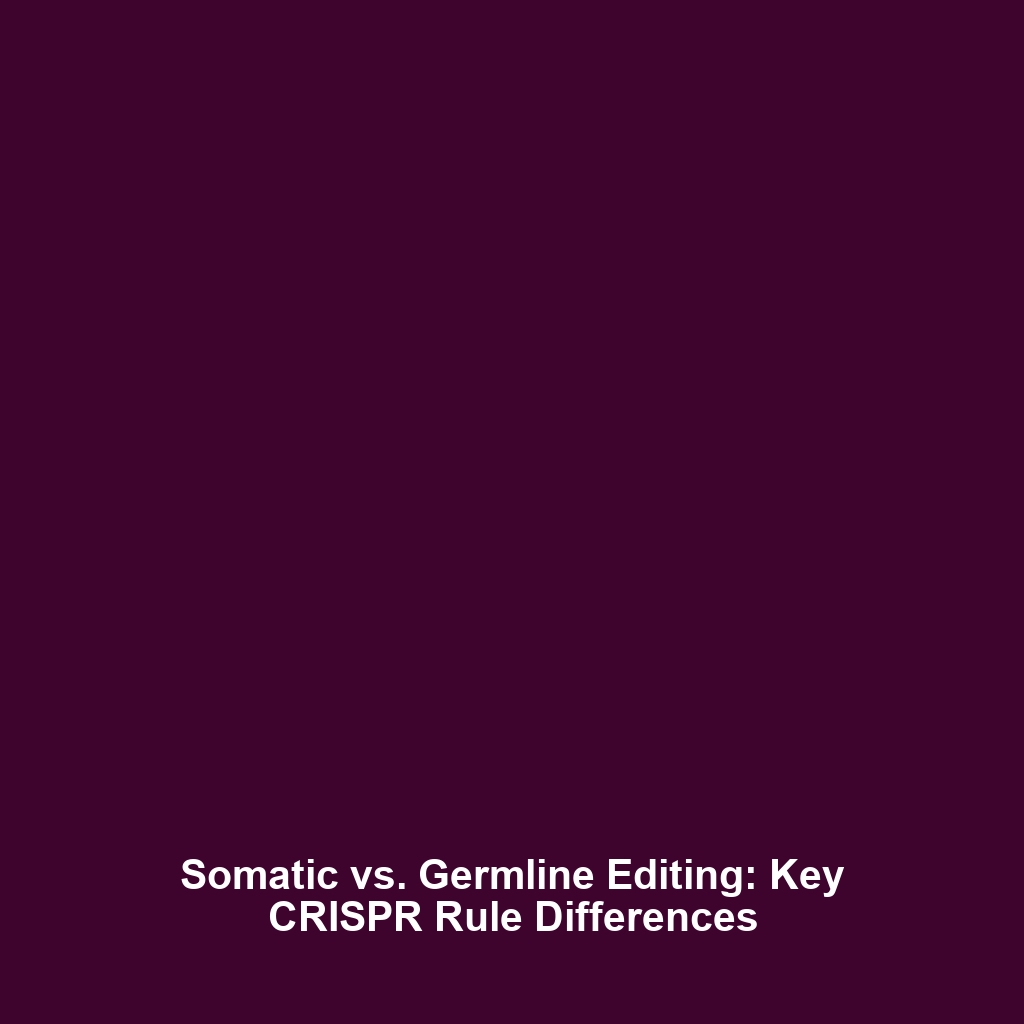International Regulations on Gene Editing: How Different Countries Govern CRISPR Use
Introduction
The international landscape of CRISPR gene editing is rapidly evolving, driven by technological advancements and ethical considerations. Governments worldwide are grappling with the complex task of regulating this powerful tool, balancing innovation and societal impact. Understanding how different countries govern CRISPR use is crucial not only for researchers and practitioners but also for the public, as these regulations will shape the future of biotechnology and genetic manipulation globally. This article explores the varying frameworks that countries have implemented to manage the use of CRISPR technology.
Key Concepts
Regulatory Frameworks
International regulations on gene editing focus on several key concepts:
- Ethical Guidelines: Many countries have established ethical frameworks to guide CRISPR research, addressing concerns about potential misuse and biodiversity.
- Safety Assessments: Governments require comprehensive safety evaluations before allowing CRISPR applications in agriculture and medicine.
- Public Engagement: Some nations prioritize public engagement in decision-making processes surrounding gene editing regulations.
These principles are essential in shaping the regulatory environment for CRISPR gene editing globally.
Applications and Real-World Uses
Understanding how international regulations on gene editing affect practical applications of CRISPR can illuminate the technology’s role in biotechnology. Significant real-world applications include:
- Agricultural Innovation: Countries like the USA and China have embraced CRISPR to enhance crop resistance to diseases and pests.
- Medical Therapies: In nations with lenient regulations, CRISPR has been utilized in clinical trials for genetic disorders.
- Environmental Conservation: Gene editing is applied in efforts to protect endangered species through genetic modification.
These applications demonstrate how international regulations directly influence the implementation of CRISPR technology across various sectors.
Current Challenges
While international regulations on gene editing aim to ensure safety and ethical compliance, there are notable challenges:
- Inconsistent regulations across countries leading to a fragmented global landscape.
- Lack of a unified international framework for CRISPR, making it difficult to standardize practices and guidelines.
- Public apprehension and misconceptions about the risks associated with gene editing technologies.
Addressing these challenges of CRISPR regulation is essential for advancing responsible innovation.
Future Research and Innovations
Looking ahead, the future of international regulations on gene editing is poised for significant evolution. Emerging trends include:
- Collaborative Frameworks: There is a growing push for global partnerships to align regulations and ensure equitable access.
- Next-Generation CRISPR Technologies: Innovations such as CRISPR 2.0 may require entirely new regulatory considerations.
- Ethics Committees: Increased establishment of ethics committees in research institutions to navigate complex dilemmas in gene editing.
These initiatives will shape the regulatory landscape and highlight the importance of comprehensive policies in overseeing future CRISPR applications.
Conclusion
International regulations on gene editing play a critical role in managing CRISPR use worldwide. As this technology continues to evolve, the frameworks governing it must adapt to ensure ethical practices that benefit society. For further reading on related topics, explore our articles on bioethics in gene editing and future innovations in biotechnology. The responsible governance of CRISPR technologies is vital for harnessing their full potential while minimizing risks to humanity and the environment.









